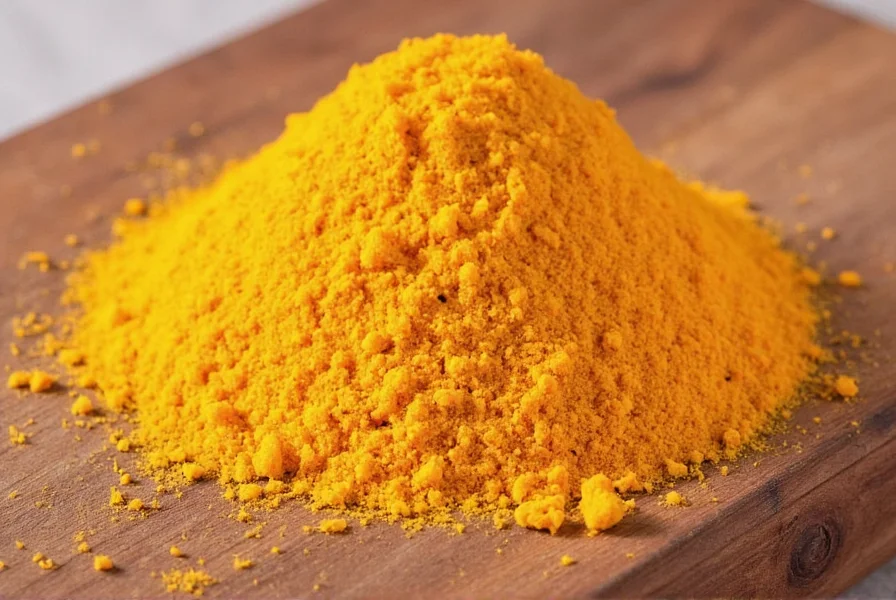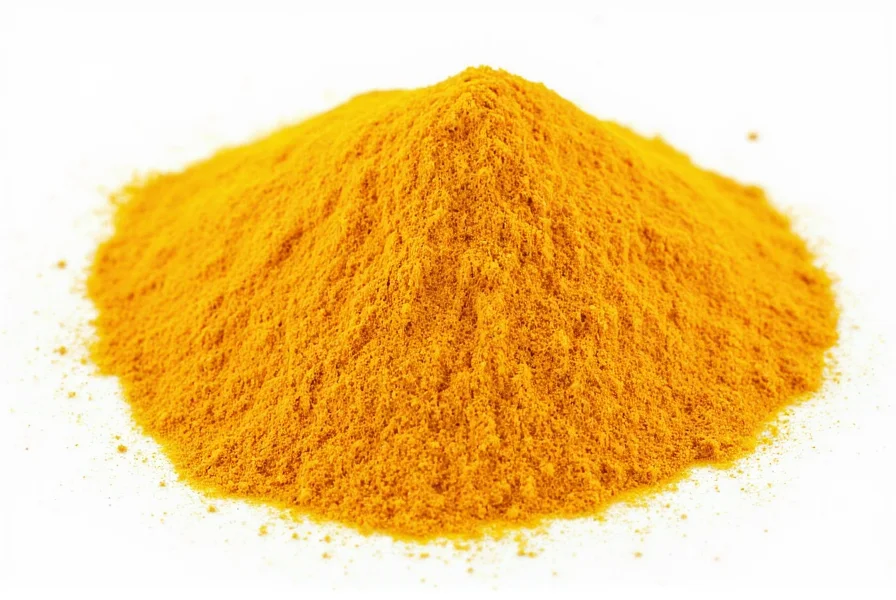Understanding turmeric taste characteristics is essential for home cooks and culinary enthusiasts looking to maximize this vibrant spice's potential. Unlike more aggressive spices, turmeric provides a nuanced flavor profile that enhances rather than dominates dishes when used properly.
The Complete Flavor Profile of Turmeric
When evaluating what does turmeric taste like, several distinct elements contribute to its unique sensory experience:
- Primary taste: Earthy and warm with moderate bitterness
- Secondary notes: Subtle citrus (particularly orange), ginger-like spiciness, and faint pepperiness
- Mouthfeel: Slightly astringent with a clean finish
- Aftertaste: Mildly bitter with lingering warmth
- Intensity level: Medium (more pronounced when fresh, milder when dried)
The distinctive turmeric flavor profile comes from its active compound curcumin, which contributes both the vibrant yellow color and much of the characteristic taste. This compound works synergistically with other volatile oils in turmeric to create its complex sensory experience.
| Form | Taste Characteristics | Best Culinary Uses |
|---|---|---|
| Fresh turmeric root | Bright, citrus-forward, more peppery, with pronounced ginger notes | Raw applications, juices, fresh sauces, pickling |
| Powdered turmeric | Deeper earthiness, more bitter, subtle metallic notes, milder citrus | Cooked dishes, curries, stews, baked goods |
| Turmeric extract | Concentrated bitterness, minimal citrus notes, intense earthiness | Supplements, highly controlled flavor applications |
Fresh vs. Powdered Turmeric: Taste Differences Explained
One of the most common questions about fresh turmeric vs powdered turmeric taste relates to their distinct flavor profiles. Fresh turmeric root delivers a brighter, more complex flavor experience:
When you grate fresh turmeric, you'll notice an immediate citrus aroma reminiscent of orange zest with underlying ginger notes. The taste is more vibrant and less bitter than its powdered counterpart, with a clean, peppery finish. This makes fresh turmeric ideal for raw applications like juices, salad dressings, and uncooked sauces where you want the flavor to shine without cooking.
Powdered turmeric, by contrast, develops a deeper earthiness during the drying process. The citrus notes become more subdued while the bitter, woody elements intensify. This form works better in cooked dishes where the flavor can mellow and integrate with other spices. The powder also has subtle metallic notes that aren't present in fresh turmeric.
How Turmeric Interacts with Other Ingredients
Understanding how to use turmeric in cooking requires knowledge of how its flavor interacts with other components. Turmeric's taste profile responds differently to various cooking techniques and ingredient combinations:
Fat significantly enhances turmeric's flavor release and absorption. When sautéed in oil or ghee, turmeric's earthy notes become more rounded and integrated. Acidic ingredients like lemon juice or vinegar can brighten turmeric's flavor while reducing perceived bitterness. Combining turmeric with black pepper not only increases curcumin absorption but also creates a more complex spice profile where the pepper's heat complements turmeric's warmth.
One common misconception about does turmeric taste good is that it's overwhelmingly bitter. In reality, when used appropriately (typically 1/4 to 1/2 teaspoon per serving), turmeric contributes depth without excessive bitterness. The key is balancing it with complementary flavors rather than expecting it to stand alone.

Practical Tips for Using Turmeric's Flavor
Mastering turmeric taste description in your cooking involves several practical considerations:
- Bloom spices: Heat turmeric in oil for 30-60 seconds before adding liquids to deepen flavor and reduce raw bitterness
- Balance bitterness: Pair with natural sweeteners like coconut milk, honey, or roasted vegetables
- Enhance citrus notes: Add orange zest or lemon juice to highlight turmeric's brighter elements
- Control intensity: Start with smaller amounts (1/4 tsp) and adjust to taste, as flavor intensifies during cooking
- Storage matters: Keep powdered turmeric in an airtight container away from light to preserve flavor for up to 6 months
For those concerned about masking turmeric taste in sensitive applications like smoothies or children's food, combining turmeric with strong complementary flavors works best. Pineapple, mango, and coconut all pair exceptionally well while minimizing any perception of bitterness. In savory applications, tomato-based sauces or hearty bean dishes provide excellent flavor bases that integrate turmeric seamlessly.

Common Misconceptions About Turmeric's Flavor
Several myths persist about turmeric flavor characteristics that deserve clarification:
Many believe turmeric has a strong, overpowering flavor, but in reality, it's relatively mild compared to spices like cayenne or cloves. When used in standard culinary amounts (not supplement doses), turmeric contributes background complexity rather than dominating a dish. Another misconception is that all turmeric tastes the same regardless of origin, but soil conditions and climate significantly affect the flavor profile, with Indian varieties typically offering more citrus notes while东南亚 varieties lean toward earthier profiles.
Understanding these nuances helps explain why turmeric in food taste can vary between recipes and brands. The quality of turmeric matters significantly—fresh, high-quality turmeric should have a vibrant aroma and clean taste without mustiness or excessive bitterness.
Conclusion: Mastering Turmeric's Flavor Profile
Turmeric's distinctive taste—earthy, warm, and subtly complex—makes it a valuable addition to any kitchen. By understanding the differences between fresh and powdered forms, how it interacts with other ingredients, and proper usage techniques, you can harness turmeric's full flavor potential without unpleasant bitterness. Whether you're exploring traditional curry recipes or experimenting with modern fusion cuisine, turmeric offers a versatile flavor foundation that enhances dishes with both color and complexity.
Frequently Asked Questions
Is turmeric supposed to taste bitter?
Yes, turmeric has natural bitterness as part of its flavor profile, but high-quality turmeric shouldn't be overwhelmingly bitter. Fresh turmeric is less bitter than powdered form. When used in appropriate culinary amounts (typically 1/4 to 1/2 teaspoon per serving) and properly prepared (such as blooming in oil), the bitterness becomes a subtle background note rather than the dominant flavor.
Why does my turmeric taste metallic?
A metallic taste in turmeric usually indicates lower quality or improper storage. Powdered turmeric can develop metallic notes if exposed to moisture or stored for too long. Fresh turmeric shouldn't have metallic notes at all. To avoid this, purchase turmeric from reputable sources, store it in airtight containers away from light, and use within 6 months for powder or 2 weeks for fresh root.
How can I reduce turmeric's bitterness in recipes?
To reduce perceived bitterness: 1) Bloom turmeric in oil for 30-60 seconds before adding liquids, 2) Pair with natural sweeteners like coconut milk or roasted vegetables, 3) Add citrus elements like lemon juice or orange zest, 4) Use black pepper which complements rather than competes with turmeric's flavor, and 5) Start with smaller amounts (1/4 tsp) and adjust to taste as the flavor intensifies during cooking.
Does fresh turmeric taste different than powdered?
Yes, fresh and powdered turmeric have noticeably different flavor profiles. Fresh turmeric offers brighter citrus notes, more pronounced ginger-like spiciness, and less bitterness. Powdered turmeric has deeper earthiness, more intense bitterness, and subtle metallic notes with subdued citrus elements. Fresh works better in raw applications while powder integrates better in cooked dishes.
What does bad turmeric taste like?
Spoiled or low-quality turmeric typically tastes musty, excessively bitter, or develops off-flavors like moldiness. Fresh turmeric should have a clean, bright aroma and taste with citrus notes, while good powdered turmeric should smell earthy and warm without mustiness. If turmeric tastes overwhelmingly bitter, metallic, or lacks aroma, it's likely old or poor quality and should be replaced.











 浙公网安备
33010002000092号
浙公网安备
33010002000092号 浙B2-20120091-4
浙B2-20120091-4